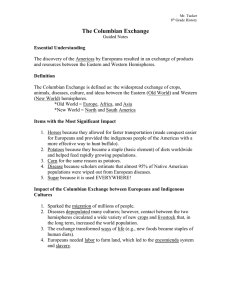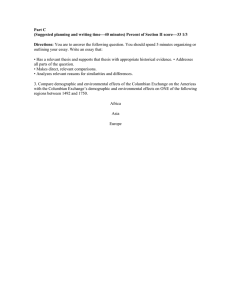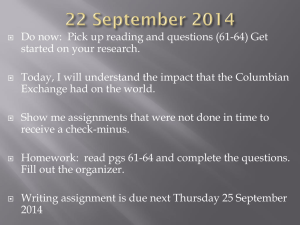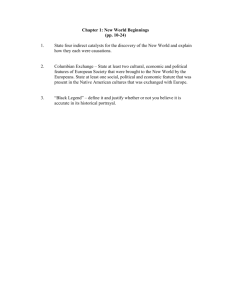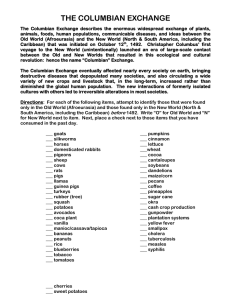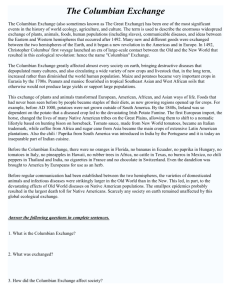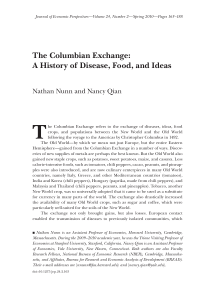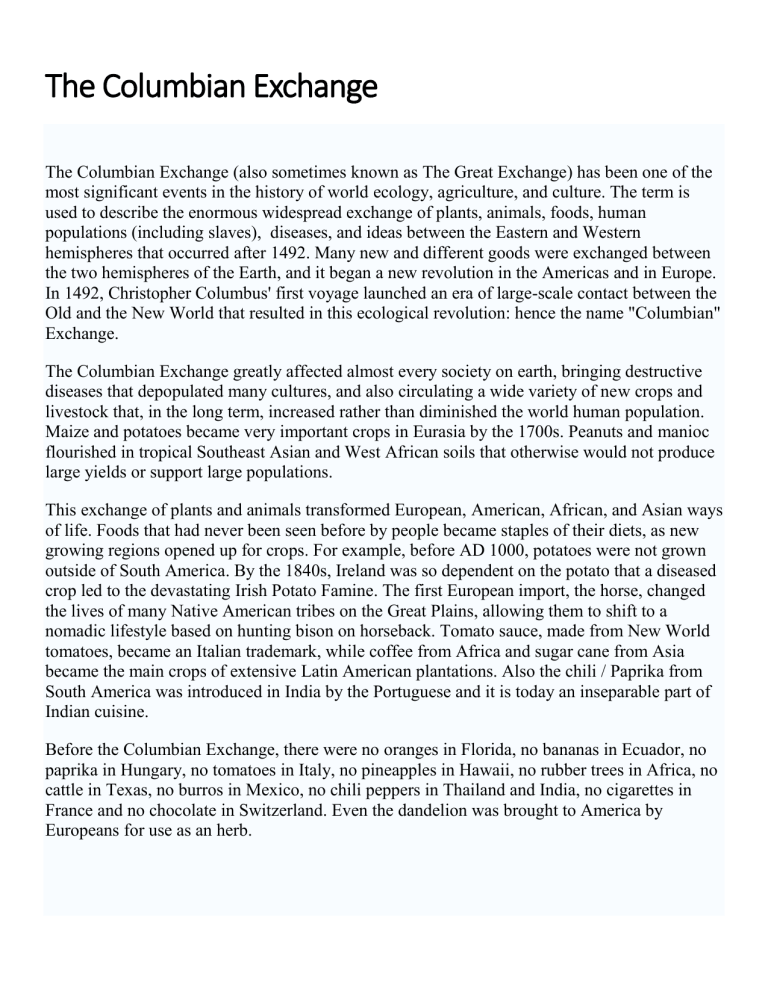
The Columbian Exchange The Columbian Exchange (also sometimes known as The Great Exchange) has been one of the most significant events in the history of world ecology, agriculture, and culture. The term is used to describe the enormous widespread exchange of plants, animals, foods, human populations (including slaves), diseases, and ideas between the Eastern and Western hemispheres that occurred after 1492. Many new and different goods were exchanged between the two hemispheres of the Earth, and it began a new revolution in the Americas and in Europe. In 1492, Christopher Columbus' first voyage launched an era of large-scale contact between the Old and the New World that resulted in this ecological revolution: hence the name "Columbian" Exchange. The Columbian Exchange greatly affected almost every society on earth, bringing destructive diseases that depopulated many cultures, and also circulating a wide variety of new crops and livestock that, in the long term, increased rather than diminished the world human population. Maize and potatoes became very important crops in Eurasia by the 1700s. Peanuts and manioc flourished in tropical Southeast Asian and West African soils that otherwise would not produce large yields or support large populations. This exchange of plants and animals transformed European, American, African, and Asian ways of life. Foods that had never been seen before by people became staples of their diets, as new growing regions opened up for crops. For example, before AD 1000, potatoes were not grown outside of South America. By the 1840s, Ireland was so dependent on the potato that a diseased crop led to the devastating Irish Potato Famine. The first European import, the horse, changed the lives of many Native American tribes on the Great Plains, allowing them to shift to a nomadic lifestyle based on hunting bison on horseback. Tomato sauce, made from New World tomatoes, became an Italian trademark, while coffee from Africa and sugar cane from Asia became the main crops of extensive Latin American plantations. Also the chili / Paprika from South America was introduced in India by the Portuguese and it is today an inseparable part of Indian cuisine. Before the Columbian Exchange, there were no oranges in Florida, no bananas in Ecuador, no paprika in Hungary, no tomatoes in Italy, no pineapples in Hawaii, no rubber trees in Africa, no cattle in Texas, no burros in Mexico, no chili peppers in Thailand and India, no cigarettes in France and no chocolate in Switzerland. Even the dandelion was brought to America by Europeans for use as an herb. With the arrival of Europeans in the Americas, the conquistadors not only killed native peoples in battle, they also took over their cities. Priests persuaded many native people to give up their old beliefs and become Christians. Colonists started large farms and forced Native Americans to work in the fields. Old World diseases entered the New World. The smallpox epidemics probably resulted in the largest death toll for Native Americans. The explorations and colonization of the Americas affected Africans too. As, native populations decreased from sickness and overwork, Europeans looked for new sources of labor, capturing and enslaving Africans. They were transported across the Atlantic Ocean to work in the New World. Discuss the following questions with your partner. 1. What is the Columbian Exchange? 2. What was exchanged? 3. How did the Columbian Exchange affect society? The Columbian Exchange Graphic Organizer Exported from the Old World to New World Exported from the New World to Old World
